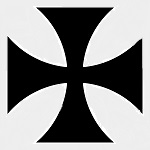Corgi AA28701 German Fokker E.II Eindecker Fighter - Baron Kurt von Crailsheim, Feldflieger-Abteilung 53, Monthois, France, October 1915 (1:48 Scale)
"When you march into France, let the last man on the right brush the Channel with his sleeve."
- General Alfred von Schlieffen, referring to the Schlieffen Plan just prior to his death in 1913
 The Fokker Eindecker fighters were a series of German World War I monoplane single-seat fighter aircraft designed by Dutch engineer Anthony Fokker. Developed in April 1915, the first Eindecker ("Monoplane") was the first purpose-built German fighter aircraft and the first aircraft to be fitted with a synchronization gear, enabling the pilot to fire a machine gun through the arc of the propeller without striking the blades. The Eindecker gave the German Air Service a degree of air superiority from July 1915 until early 1916. This period, during which Allied aviators regarded their poorly armed aircraft as "Fokker Fodder", became known as the "Fokker Scourge".
The Fokker Eindecker fighters were a series of German World War I monoplane single-seat fighter aircraft designed by Dutch engineer Anthony Fokker. Developed in April 1915, the first Eindecker ("Monoplane") was the first purpose-built German fighter aircraft and the first aircraft to be fitted with a synchronization gear, enabling the pilot to fire a machine gun through the arc of the propeller without striking the blades. The Eindecker gave the German Air Service a degree of air superiority from July 1915 until early 1916. This period, during which Allied aviators regarded their poorly armed aircraft as "Fokker Fodder", became known as the "Fokker Scourge".
The Eindecker was based on Fokker's unarmed Fokker M.5K scout (military designation Fokker A.III) which in turn was based on the design of the French Morane-Saulnier H shoulder-wing monoplane, although it differed in using chrome-molybdenum steel tubing for the fuselage structure instead of wood. It was fitted with an early version of the Fokker synchronizer mechanism controlling a single Parabellum MG14 machine gun. Anthony Fokker personally demonstrated the system on May 23rd, 1915, having towed the prototype aircraft behind his touring car to a military airfield near Berlin.
Pictured here is a 1:48 scale replica of a German Fokker E.II Eindecker fighter that was piloted by Baron Kurt von Crailsheim, who was attached to Feldflieger-Abteilung 53, then deployed to Monthois, France, during October 1915.
Sold Out!
Dimensions:
Length: 6-inches
Wingspan: 7-1/2-inches
Release Date: August 2020
Historical Account: "The Fokker Scourge" - Few airplanes have had such a dramatic impact on the history of aerial warfare as the Fokker Eindecker series of monoplanes, aircraft which are regarded as the first true fighter aircraft in the history of aviation. It was not that these single-wing aircraft were such advanced aeronautical designs, as many of the world's successful early aircraft were monoplanes (such as the Bleriot XI which crossed the English Channel in 1909), however, they did make use of a particularly sinister innovation. The introduction of interrupter gear synchronized the aircraft's machine-gun to fire through the arc of the propeller, only allowing it to operate once the blade was clear and crucially, in the pilot's direct line-of-sight.
For the first time, an airplane had been specifically introduced to hunt and destroy other aircraft - the day of the fighter airplane had arrived. Despite having a dramatic impact on the Western Front, the Eindecker was still a relatively primitive aircraft and required an immense amount of skill in order to be flown well. This was illustrated by eager young Luftstreitkrafte pilot Baron Kurt von Crailsheim, who on being posted to FFA 53 in the summer of 1915, had his and the unit's first aerial victory by September 22nd. Just a few days later, he crashed the twitchy Eindecker whilst attempting a landing at Monthois airfield, which resulted in his fighter being written off. He later received a new replacement aircraft, which he once again painted in his personal colors, but was to be the machine which claimed his life. Suffering a similar landing accident on December 30th, 1915, his injuries would prove so severe that he died in hospital five days later.





 Corgi Fokker E.II Eindecker
Corgi Fokker E.II Eindecker 


